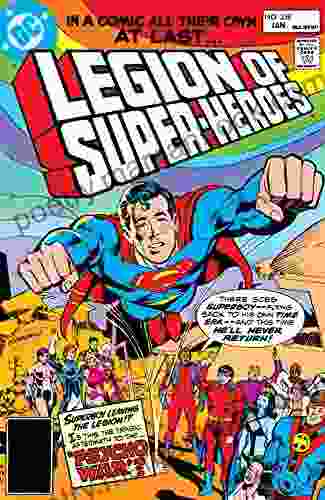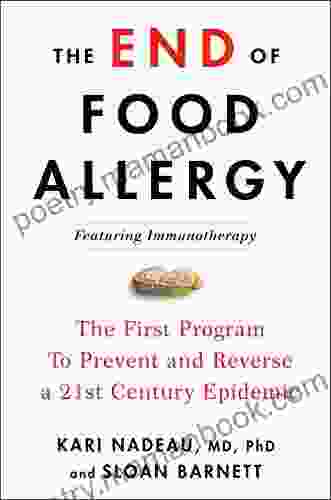The End of Food Allergy: A Revolutionary Advance in Immunotherapy

Food allergies are a common and serious problem that can affect people of all ages. In recent years, the prevalence of food allergies has been increasing, and it is now estimated that up to 10% of the population may be affected. Food allergies can cause a wide range of symptoms, including hives, swelling, difficulty breathing, and even anaphylaxis. In severe cases, food allergies can be fatal.
Traditional treatment for food allergies has focused on avoidance of the offending food. However, this can be difficult and restrictive, and it does not always prevent allergic reactions. In recent years, there have been significant advances in the development of immunotherapy for food allergies. Immunotherapy involves exposing the patient to small amounts of the allergen in a controlled setting, with the goal of reducing the severity of allergic reactions or eliminating them altogether.
There are different types of immunotherapy for food allergies:
4.6 out of 5
| Language | : | English |
| File size | : | 4032 KB |
| Text-to-Speech | : | Enabled |
| Screen Reader | : | Supported |
| Enhanced typesetting | : | Enabled |
| X-Ray | : | Enabled |
| Word Wise | : | Enabled |
| Print length | : | 352 pages |
Immunotherapy for food allergies is a promising new treatment that has the potential to revolutionize the way we manage this condition. However, it is important to note that immunotherapy is not a cure for food allergies, and it does not work for everyone. There are also potential side effects associated with immunotherapy, including allergic reactions.
Immunotherapy for food allergies works by gradually exposing the patient to the allergen in a controlled setting. This helps the immune system to learn to tolerate the allergen and to reduce the severity of allergic reactions. Immunotherapy is typically administered over a period of several months or years.
The exact mechanism of action of immunotherapy is not fully understood, but it is thought to involve several different processes. One theory is that immunotherapy helps to increase the levels of regulatory T cells in the body. Regulatory T cells are a type of immune cell that helps to suppress allergic reactions. Another theory is that immunotherapy helps to reduce the levels of inflammatory cytokines in the body. Inflammatory cytokines are proteins that are released by the immune system in response to an allergen, and they can contribute to the symptoms of food allergies.
Immunotherapy for food allergies is not suitable for everyone. The best candidates for immunotherapy are people who have a well-defined food allergy that is confirmed by a skin prick test or blood test. Immunotherapy is also more likely to be successful in people who have a single food allergy, rather than multiple food allergies.
Immunotherapy is not recommended for people who are at high risk of anaphylaxis, or who have a history of severe allergic reactions. Immunotherapy is also not recommended for people who are pregnant or breastfeeding.
Immunotherapy for food allergies has a number of potential benefits, including:
Immunotherapy for food allergies is generally safe, but there are some potential side effects. The most common side effects include:
The risk of systemic reactions is highest during the early stages of immunotherapy. The risk of side effects can be reduced by starting with a very low dose of the allergen and by increasing the dose gradually over time.
Immunotherapy for food allergies is administered in a controlled setting, such as a doctor's office or hospital. The type of immunotherapy that is used will depend on the individual patient and the allergen.
Oral immunotherapy (OIT) involves consuming small amounts of the allergen in gradually increasing doses. The allergen is typically mixed into a food that the patient can easily eat, such as a muffin or a cookie. OIT is typically administered once or twice a day.
Sublingual immunotherapy (SLIT) involves placing small amounts of the allergen under the tongue. The allergen is typically dissolved in a liquid or placed on a small tablet. SLIT is typically administered once or twice a day.
Epicutaneous immunotherapy (EPIT) involves applying small amounts of the allergen to the skin. The allergen is typically applied to a patch of skin on the arm or back. EPIT is typically administered once or twice a day.
The length of time that immunotherapy is administered will vary depending on the individual patient and the allergen. In general, immunotherapy is administered for a period of several months or years.
The success rates of immunotherapy for food allergies vary depending on the type of immunotherapy, the allergen, and the individual patient. However, studies have shown that immunotherapy can be successful in up to 80% of patients.
OIT is generally more successful than SLIT or EPIT. This is because OIT exposes the patient to the allergen more directly. However, OIT is also more likely to cause side effects.
The success of immunotherapy is also dependent on the allergen. Immunotherapy is more likely to be successful for allergies to peanuts, milk, and eggs. Immunotherapy is less likely to be successful for allergies to tree nuts, fish, and shellfish.
Immunotherapy for food allergies is a promising new treatment that has the potential to revolutionize the way we manage this condition. However, more research is needed to improve the success rates of immunotherapy and to reduce the risk of side effects.
One area of research is focused on developing new types of immunotherapy that are more effective and have fewer side effects. Another area of research is focused on developing new ways to identify people who are most likely to benefit from immunotherapy.
Immunotherapy for food allergies is a rapidly evolving field, and it is likely that we will see significant advances in the coming years. This is good news for the millions of people who suffer from food allergies.
Food allergies are a serious problem that can have a significant impact on quality of life. Immunotherapy is a promising new treatment that has the potential to revolutionize the way we manage this condition. Immunotherapy is not a cure for food allergies, but it can help to reduce the severity of allergic reactions and to improve quality of life.
If you are interested in learning more about immunotherapy for food allergies, talk to your doctor. Immunotherapy is not suitable for everyone, but it may be a good option for you if you have a well-defined food allergy that is confirmed by a skin prick test or blood test.
Additional Long Descriptive Keywords for Alt Attribute:
- Doctor administering immunotherapy treatment for food allergies
- Patient receiving oral immunotherapy treatment for peanut allergy
- Patient receiving sublingual immunotherapy treatment for milk allergy
- Patient receiving epicutaneous immunotherapy treatment for egg allergy
- Close-up of immunotherapy patch for food allergies
- Child eating food after successful immunotherapy treatment for food allergies
- Family celebrating after successful immunotherapy treatment for food allergies
4.6 out of 5
| Language | : | English |
| File size | : | 4032 KB |
| Text-to-Speech | : | Enabled |
| Screen Reader | : | Supported |
| Enhanced typesetting | : | Enabled |
| X-Ray | : | Enabled |
| Word Wise | : | Enabled |
| Print length | : | 352 pages |
Do you want to contribute by writing guest posts on this blog?
Please contact us and send us a resume of previous articles that you have written.
 Top Book
Top Book Novel
Novel Fiction
Fiction Nonfiction
Nonfiction Literature
Literature Paperback
Paperback Hardcover
Hardcover E-book
E-book Audiobook
Audiobook Bestseller
Bestseller Classic
Classic Mystery
Mystery Thriller
Thriller Romance
Romance Fantasy
Fantasy Science Fiction
Science Fiction Biography
Biography Memoir
Memoir Autobiography
Autobiography Poetry
Poetry Drama
Drama Historical Fiction
Historical Fiction Self-help
Self-help Young Adult
Young Adult Childrens Books
Childrens Books Graphic Novel
Graphic Novel Anthology
Anthology Series
Series Encyclopedia
Encyclopedia Reference
Reference Guidebook
Guidebook Textbook
Textbook Workbook
Workbook Journal
Journal Diary
Diary Manuscript
Manuscript Folio
Folio Pulp Fiction
Pulp Fiction Short Stories
Short Stories Fairy Tales
Fairy Tales Fables
Fables Mythology
Mythology Philosophy
Philosophy Religion
Religion Spirituality
Spirituality Essays
Essays Critique
Critique Commentary
Commentary Glossary
Glossary Bibliography
Bibliography Index
Index Table of Contents
Table of Contents Preface
Preface Introduction
Introduction Foreword
Foreword Afterword
Afterword Appendices
Appendices Annotations
Annotations Footnotes
Footnotes Epilogue
Epilogue Prologue
Prologue Chandra Subhash Garg
Chandra Subhash Garg Prabhu Tl
Prabhu Tl John Koethe
John Koethe N E Davenport
N E Davenport John Q Public
John Q Public Ke Yang
Ke Yang Anders Engberg Pedersen
Anders Engberg Pedersen Emma Goldrick
Emma Goldrick Robert Juliano
Robert Juliano Jennifer Lee
Jennifer Lee Ellie Crowe
Ellie Crowe Kolby Moore
Kolby Moore Karen Petrou
Karen Petrou John Elray
John Elray Jeremy Peters
Jeremy Peters Anatole Lyovin
Anatole Lyovin Randall L B Mcneill
Randall L B Mcneill Dafna Vitale Ben Bassat
Dafna Vitale Ben Bassat Marianne Taylor
Marianne Taylor Stephen Rollnick
Stephen Rollnick
Light bulbAdvertise smarter! Our strategic ad space ensures maximum exposure. Reserve your spot today!

 Andy HayesThe Credit Card Affair: Zain Altaf's Rise and Fall from Grace in the World of...
Andy HayesThe Credit Card Affair: Zain Altaf's Rise and Fall from Grace in the World of...
 Elias MitchellThe Legion of Super-Heroes: A Comprehensive Look at the Epic 1980-1989 Saga
Elias MitchellThe Legion of Super-Heroes: A Comprehensive Look at the Epic 1980-1989 Saga
 Gabriel Garcia MarquezJurassic Resort: Battle for Raptor City - A Thrilling Adventure for the Whole...
Gabriel Garcia MarquezJurassic Resort: Battle for Raptor City - A Thrilling Adventure for the Whole... Shaun NelsonFollow ·11.8k
Shaun NelsonFollow ·11.8k Richard SimmonsFollow ·6.6k
Richard SimmonsFollow ·6.6k Hugh ReedFollow ·4.9k
Hugh ReedFollow ·4.9k Jack ButlerFollow ·11.2k
Jack ButlerFollow ·11.2k Andrew BellFollow ·19.6k
Andrew BellFollow ·19.6k Javier BellFollow ·13.9k
Javier BellFollow ·13.9k Anton FosterFollow ·5.6k
Anton FosterFollow ·5.6k Dwight BellFollow ·10.5k
Dwight BellFollow ·10.5k

 Patrick Hayes
Patrick HayesDeath on Stage: Euphemia Martins Mystery 16
Synopsis In the...

 Benji Powell
Benji Powell1001 Best Baking Recipes Of All Time
Baking is a fun and...

 Terry Bell
Terry BellDestined War of the Covens: A Supernatural Saga of Power,...
Welcome to the...

 Mark Twain
Mark TwainBitcoin For Mere Mortals: A Comprehensive Guide for...
Bitcoin is a...

 Dennis Hayes
Dennis HayesThe Best Budget Gaming PC 2024: Build the Ultimate Gaming...
Are you looking to build the best budget...
4.6 out of 5
| Language | : | English |
| File size | : | 4032 KB |
| Text-to-Speech | : | Enabled |
| Screen Reader | : | Supported |
| Enhanced typesetting | : | Enabled |
| X-Ray | : | Enabled |
| Word Wise | : | Enabled |
| Print length | : | 352 pages |








